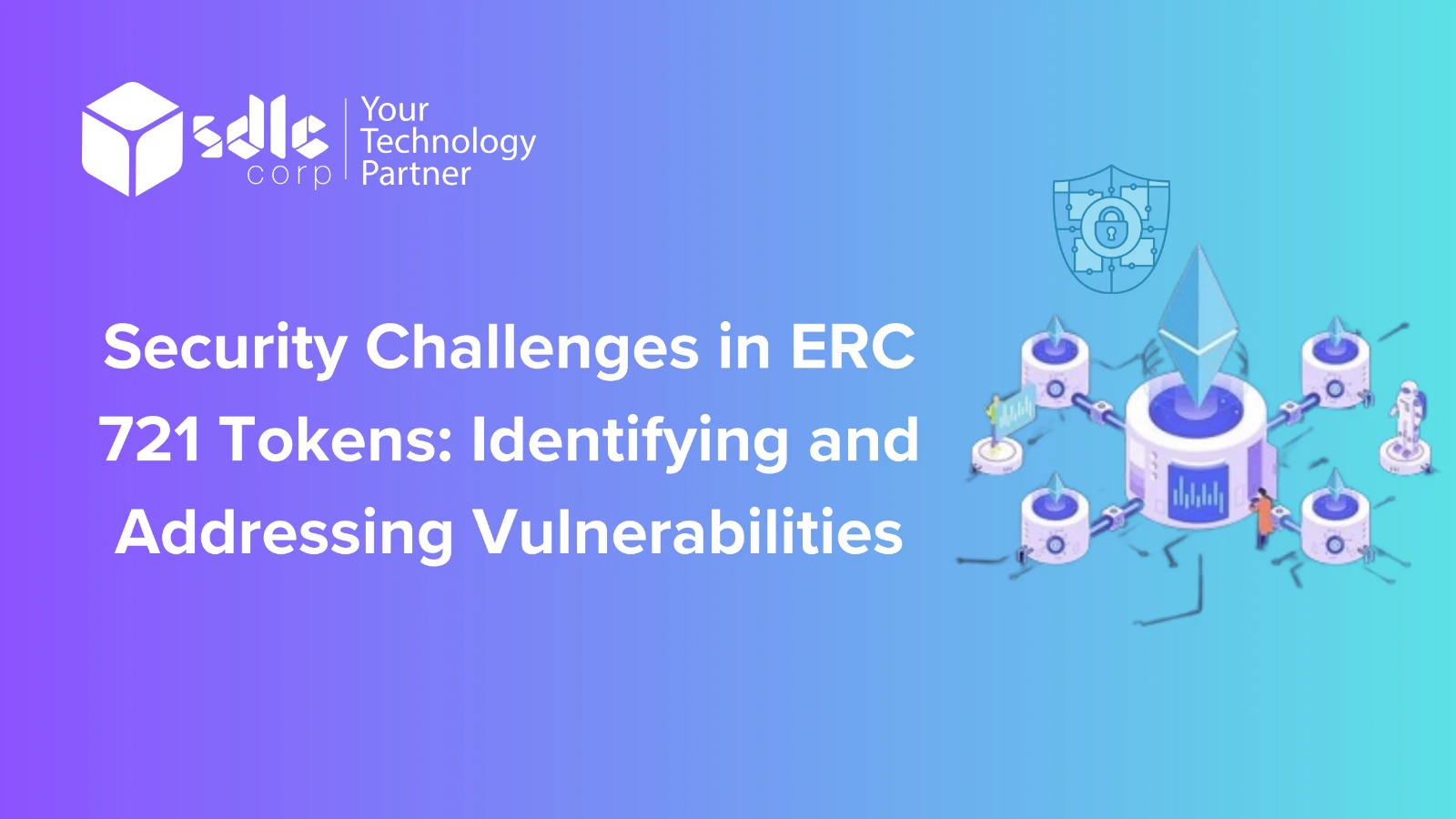Introduction
Blockchain technology has revolutionised digital ownership and provenance with token standards like ERC-721 on the Ethereum blockchain. ERC-721 tokens, also known as non-fungible tokens (NFTs), enable the creation and management of unique digital assets, each with distinct properties and ownership records. Technical Specifications of ERC-721 Tokens include their ability to represent unique items or assets, ensure ownership verification through smart contracts, and allow for metadata storage to describe each token’s attributes. While ERC-721 tokens have unlocked unprecedented possibilities in digital art, collectibles, gaming, and real-world asset tokenization, they also present unique security challenges that require careful consideration and mitigation strategies. This blog explores the specific security vulnerabilities associated with ERC-721 tokens, identifies common risks, and discusses proactive measures to enhance their security posture.
Understanding ERC-721 Tokens
Blockchain technology has revolutionised digital ownership and provenance with token standards like ERC-721 on the Ethereum blockchain. ERC-721 tokens, also known as non-fungible tokens (NFTs), enable the creation and management of unique digital assets, each with distinct properties and ownership records. Technical Specifications of ERC-721 Tokens include their ability to represent unique items or assets, ensure ownership verification through smart contracts, and allow for metadata storage to describe each token’s attributes. While ERC-721 tokens have unlocked unprecedented possibilities in digital art, collectibles, gaming, and real-world asset tokenization, they also present unique security challenges that require careful consideration and mitigation strategies. This blog explores the specific security vulnerabilities associated with ERC-721 tokens, identifies common risks, and discusses proactive measures to enhance their security posture.
security token offering services

Common Security Vulnerabilities
- Smart Contract Vulnerabilities: Smart contracts governing ERC-721 tokens may be vulnerable to programming errors such as reentrancy, integer overflow/underflow, and improper access control. Exploiting these vulnerabilities can allow malicious actors to alter ownership records, manipulate token attributes, or drain funds associated with token transactions.
- Phishing and Social Engineering: Users may fall victim to phishing attacks or social engineering tactics where they unknowingly disclose sensitive information (private keys, passwords) or interact with malicious websites posing as legitimate NFT marketplaces. This can lead to unauthorised access to wallets containing ERC-721 tokens or fraudulent transactions.
- Metadata Tampering: Metadata associated with ERC-721 tokens, such as token attributes, ownership history, and provenance details, may be susceptible to tampering or manipulation. Unauthorised changes to token metadata can undermine the authenticity and value of digital assets, affecting their marketability and trustworthiness.
- Platform Security: Decentralised marketplaces and platforms hosting ERC-721 tokens may themselves be vulnerable to security breaches, hacking attempts, or insider threats. Inadequate security practices, vulnerabilities in platform architecture, or lack of transparency can expose users’ tokens to theft, loss, or unauthorised access.
Strategies to Mitigate Risks
- Code Audits and Formal Verification: Conduct rigorous code audits and employ formal verification techniques to identify and rectify vulnerabilities in smart contracts governing ERC-721 tokens. Engage reputable auditors with expertise in blockchain security to ensure comprehensive assessments and recommendations.
- Secure Development Practices: Follow secure coding practices such as using validated libraries, implementing access controls, validating inputs, and ensuring proper error handling in smart contract development. Adhere to best practices recommended by the Ethereum community for robust security.
- User Education and Awareness: Educate users about phishing risks, scam prevention, and the importance of securing private keys. Provide clear guidelines and resources to help users verify token authenticity, authenticate transactions, and avoid interacting with suspicious platforms or links.
- Metadata Integrity and Verification: Implement mechanisms to ensure the integrity and authenticity of ERC-721 token metadata. Use cryptographic hashing or digital signatures to verify metadata authenticity and detect any unauthorised modifications or tampering attempts.
- Platform Security Measures: Enhance platform security by implementing multi-factor authentication (MFA), secure communications protocols, and regular security audits. Maintain transparency about security practices, engage in responsible vulnerability disclosure, and promptly address identified security issues to protect user assets.
- Community Engagement and Transparency: Foster a community-driven approach to security by encouraging responsible disclosure of vulnerabilities, maintaining open communication channels with users, and regularly updating them on security practices and improvements. Engage actively in security discussions and collaborate with stakeholders to address emerging threats.
Conclusion
Security challenges in ERC-721 tokens underscore the importance of proactive measures to safeguard digital ownership, uphold platform integrity, and foster trust in decentralised ecosystems. By addressing vulnerabilities through rigorous audits, secure development practices, user education, advanced security measures, and community engagement, stakeholders can mitigate risks effectively and promote the safe adoption of ERC-721 tokens across diverse applications. As blockchain technology continues to evolve, prioritising security remains crucial to unlocking the full potential of digital collectibles, decentralised marketplaces, and innovative tokenized assets powered by ERC-721 tokens on the Ethereum blockchain. The Technical Specifications of ERC-721 Tokens, which define a standard interface for non-fungible tokens (NFTs), ensure unique identification and tracking of each token, allowing for individual ownership and provenance verification within smart contracts, thereby enhancing the overall robustness and security of the ecosystem.















